Sure it takes time, effort and practice to become a strong writer. But if you want to learn how to write a blog post that’ll bring you new readers and captivate your existing ones, you can get started on that—and make significant progress—right here today.
I’ve been blogging here for 10+ years, and in that process I’ve gone from fumbling around with learning how to start a blog, to perfecting a step-by-step writing process that brings my blog nearly 2 Million readers each year.
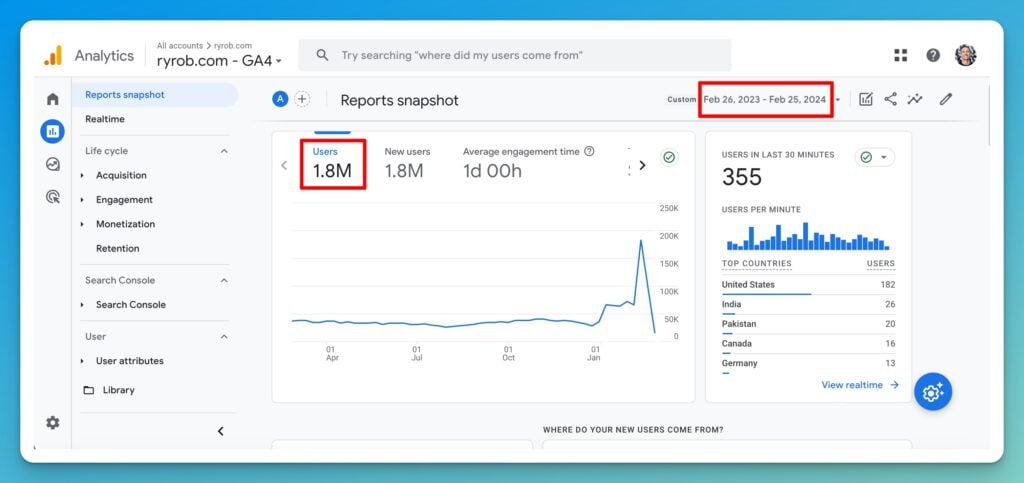
In today’s guide about how to write a blog post, we’ll be touching on everything from how to better understand your readers, to my formula for generating creative blog post ideas that’ll captivate reader attention, how to write winning headlines that encourage more clicks, how to structure a blog post for maximum readability, storytelling and much more.
How to Write a Blog Post in 2025 (Free Blog Post Template and Step-by-Step Tutorial)
- Get to Know Your Blog Audience
- Write a Clever Headline for Every Blog Post
- Hook Your Readers From the Start
- Answer Questions with Your Blog Posts
- Tell a Captivating Story
- Make Your Blog Posts Easily Scannable
- Invest in Thoughtful Design
- Be Authentic in Your Writing
- Make Your Blog Posts Portable (and Mobile-Friendly)
- Prioritize Quality Over Quantity
- Show Them the Numbers
Disclosure: Please note that some of the links below are affiliate links and at no additional cost to you, I’ll earn a commission. When you purchase a product or service using my one of my affiliate links, the company compensates me, which helps me run this blog and keep this type of content free of charge to you. Know that I also only recommend products I personally stand behind.
Use My 50+ Powerful Free Blogging Tools Today
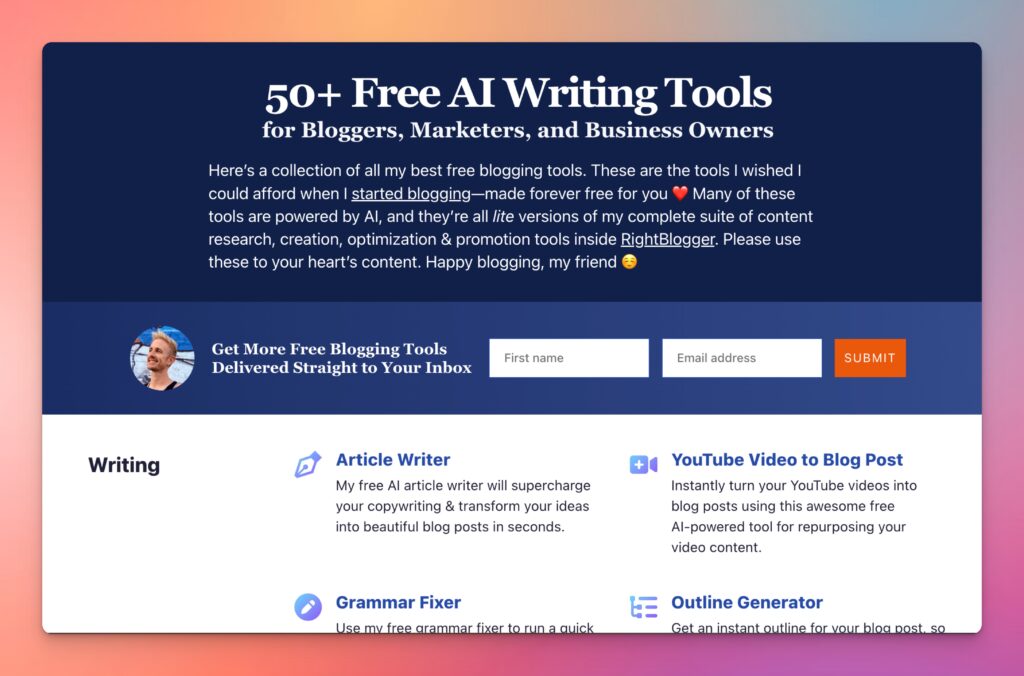
When I first started blogging, I couldn’t afford fancy tools. That sucked. And that’s why I’ve built a stable of powerful free blogging tools ranging from keyword research to an AI article writer, blog idea generator and more. Forever free for all to use—no strings attached.
Now, there’s no way to put this lightly, so I’m just going to come out and say it…
Bloggers looking to promote their blogs, grow traffic or even maintain their existing organic search rankings, face an uphill battle heading into the future.
For starters, Google is sending less organic traffic to websites today, even cannibalizing their own ad revenue, in favor of keeping searchers on Google-owned properties or providing them immediate answers in the form of featured snippets like this right here (where my guide to starting a blog is often featured):
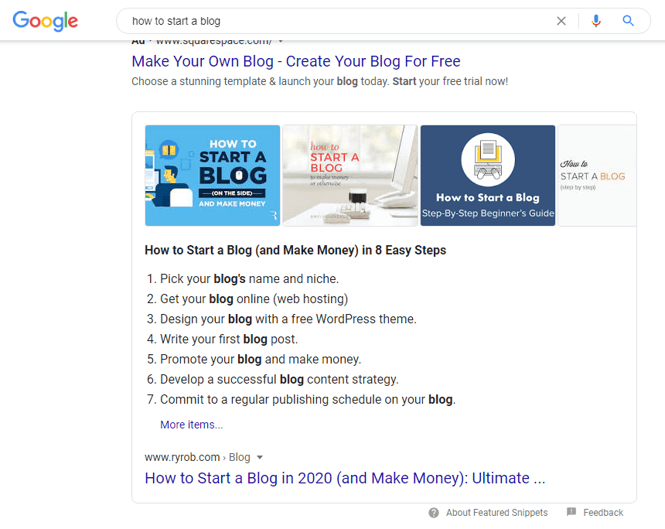
On top of that, there’s been an increasing trend toward plummeting (free) social reach and engagement on the major platforms like Facebook, Twitter and LinkedIn. According to the latest blogging statistics, most blog posts actually get less than 4 social shares and 0 backlinks.
And while it comes as no surprise, competition for eyeballs is skyrocketing with more than 4 million new blog posts published every day.
There’s a race to the top in providing genuinely helpful, well-researched, transformational content for readers today.
That’s why learning how to write a blog post that stands far above the competition (in providing immense reader value) is so crucial in 2025.
Despite more competition than ever before, therein lies the opportunity. If you’re willing to put in the time and effort to learn how to write a blog post that can balance the delicate tasks of both entertaining and solving your readers challenges, then you’ll have no trouble rising above the others in your industry.
In spite of all these challenges to learning how to grow a blog, blogging remains one of the most effective ways to teach, inspire, and engage an audience.
So what’s a blogger to do in today’s world?
After spending hours analyzing my most successful blog posts (articles that have been read millions of times), I’ve put together this step-by-step guide about how to write a blog post that will help you increase traffic, find your target audience and keep them coming back for more. Plus, I’m including access to my free blog post templates you can use as a framework for getting started on writing your own high-traffic blog posts.
If you want access to my free blog post template (in the form of a copy & paste Google Doc), then you can grab it right here—including my SEO blog post writing checklist and a fully completed example to guide you along the way—get my free blog post template.
Want to Learn How to Write a Blog Post?
Grab my free blog post template for creating compelling content.
"*" indicates required fields
Now first, if you’re totally new to blogging today, I’ve also put together the ultimate guide to getting started with your blog. Actually getting your blog online and well-optimized is the first step to learning how to write a blog post that’ll attract readers, and my 25,000 word guide to starting a blog will position you best for going on to bring thousands of readers to your blog in the near future.
Alright, now let’s dive into my guide about how to write a blog post that’ll captivate readers and drive more traffic to your blog.
1. Get to Know Your Blog Audience
Before you even begin learning how to write a blog post, you’ll need to pick a niche to blog about and identify a range of blog post ideas that’ll actually capture the attention of your readers.
Approach writing a blog post like you would start a conversation—begin by finding common ground.
To deliver value to your readers, you need to write about things they want to know about, not just what you want to tell them.
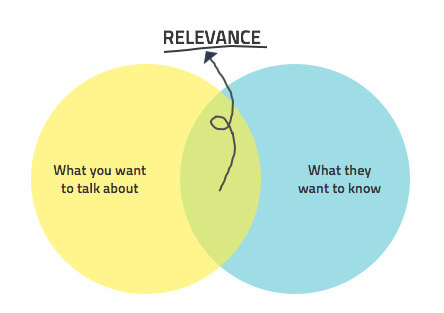
Do you really know what your target audience is interested in?
If not, then that’s your absolute most important mission at this stage. Keep in mind that understanding your audience is much different than the activity of simply doing keyword research and identifying opportunities that could bring in readers. That’s attempting to solve your traffic problem backwards.
Use My Free Keyword Research Tool
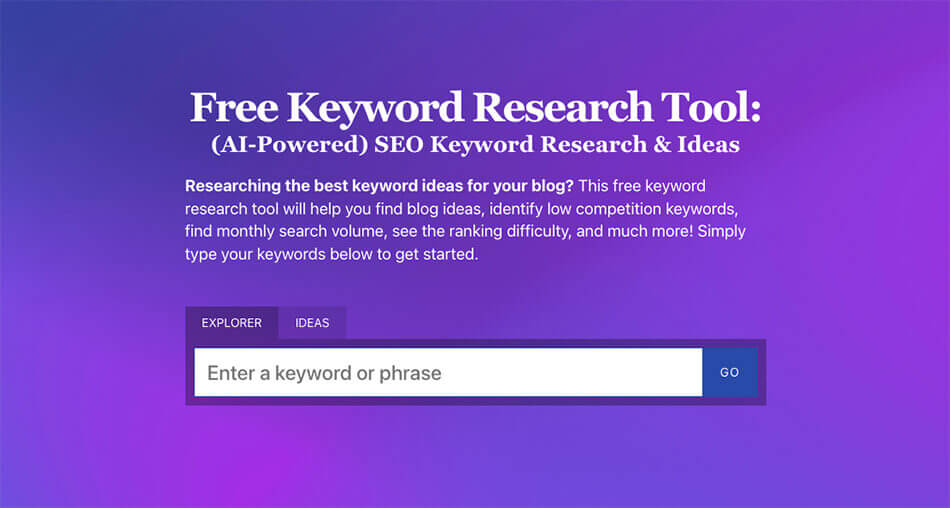
Try my free AI-Powered Keyword Tool to get dozens of research-backed ideas for keywords & topics to write about on your blog today.
The goal is not figuring out which topics are popular in general. You’re trying to figure out what your audience wants to know, as it relates to your own interests.
Anyone can spend ten minutes researching which keywords get a ton of search traffic on the Internet and start writing a blog post to go after those phrases.
But that’s not how you build genuine relationships (or devise a long-term blog business plan) with your readers and leave them wanting to come back for more.
Short-term content hacks will only take you so far—and search engines are getting much better at surfacing only the absolute best, most reputable, trustworthy and authoritative content to their users.
Here are a few of my favorite ways to start pinpointing meaningful blog topic ideas I know I’ll need to write a blog post about for my readers—by first answering these kinds of questions:
- What are my readers most pressing needs in the long-term?
- Which concerns do they have top of mind today?
- What are their skills and ability levels?
- How about a general focus area they’re concerned with?
- What kinds of goals do they have for themselves? (These should track with your own blogging goals)
- Any unique struggles of my own that I can share and be relatable?
Dive into my epic list of 201+ blog post ideas you can use to come up with compelling content for your blog today.
If you invest the time into polling your readers and truly understanding where they come from (including everything from their feelings on the name of your blog to the topics you’re covering), you’ll learn how to write a blog post that cuts to the core of their needs.
On a more granular level, here are a few more precise tactics to uncover the topics your readers are most interested in learning about:
- Ask them: It may sound over-simplified, but nothing beats speaking directly with your readers. Run a survey with a tool like SurveyMonkey or other SurveyMonkey alternatives, a poll on Twitter, a design test with Helio or send out a questionnaire directly to your list as a part of your blog email marketing efforts. Find other online communities where there are more active readers and ask there. No matter which method you choose, you’re bound to get valuable insights when you take the time to ask meaningful questions.
- Use Google Autocomplete: Don’t have many readers to ask yet? Try Google Autocomplete. When you start typing words into the Google search field, different search suggestions are displayed based off of millions of other related Google searches. These predictions can give you a ton of insights about user-intent and highlight several related subjects you can explore to comprehensively address the questions your readers are asking search engines.
- See what people are asking on Quora: Enter a topic into Quora and you’ll almost always see a myriad of relevant questions (and answers related to that topic). This research technique is a gold mine for discovering exactly what readers like yours may want to know or learn more about, which you can then incorporate into your blog planner.
Because I feel so strongly about this, I’ll say it one more time…
The journey to learning how to write a blog post people will actually want to read begins (and as you’ll soon see, ends) with understanding those people first.
The closer your connection to your readers, the more authentic your content will be in the long run.
If you want access to my free blog post template (in the form of a copy & paste Google Doc), then you can grab it right here—including my SEO blog post writing checklist and a fully completed example to guide you along the way—get my free blog post template.
Want to Learn How to Write a Blog Post?
Grab my free blog post template for creating compelling content.
"*" indicates required fields
2. Write a Clever Headline for Every Blog Post

The importance of mastering how to write a headline (or title) that’s intriguing, can’t be overstated when you’re learning how to write a blog post.
Strong headlines are marketing tools in themselves. They represent your blog post across social media platforms, in Google search results, and within emails.
Before people even start reading the blog post you wrote, your title is already shaping their opinion of it.
In fact, 6 out of 10 people report only reading a blog’s headline before they share the post on social networks like Facebook, Twitter and LinkedIn.
Need Catchy Blog Title Ideas?
Try my free AI-Powered Blog Title Generator Tool to get dozens of SEO-friendly headline ideas to make your blog posts stand out today.
So how do you write a captivating headline that’ll encourage people to read, click and share?
Let’s start with a quote from one of my favorite marketing mentors, Seth Godin, where he succinctly sums up the fact that… great ideas come through working in volume.
“Good ideas come from bad ideas, but only if there are enough of them.” – Seth Godin
The tactical blogging lesson we can extract from Godin here, is that while it’s important to spend some time on the headline when learning how to write a blog post that’ll encourage clicks and shares—you also can’t afford to allow yourself to get hung up trying to craft the perfect headline—you’ll eat through time and have little to show for it.
This is especially true as you’re just starting the process of writing your blog post and you’ve still got a blank page staring back at you.
Instead of spending hours on a headline up front, start with a simple working title that you can change later.
For example, when I first started on this article you’re reading right now, my working title of “How to Write a Blog Post” was intentionally very simple.
As I moved through the process of how to write a blog post outline—and then onto actually writing the article, the headline took more shape as I identified and clarified all of the working components required to produce the definitive guide to learning how to write a blog post.
Before originally publishing this guide, the full title became “How to Write a Blog Post in 2025 (Free Blog Post Template): The Ultimate Writing Guide for Bloggers” which is significantly expanded (and more interesting) for potential readers who stumble upon this guide on social media, in search engines or otherwise.
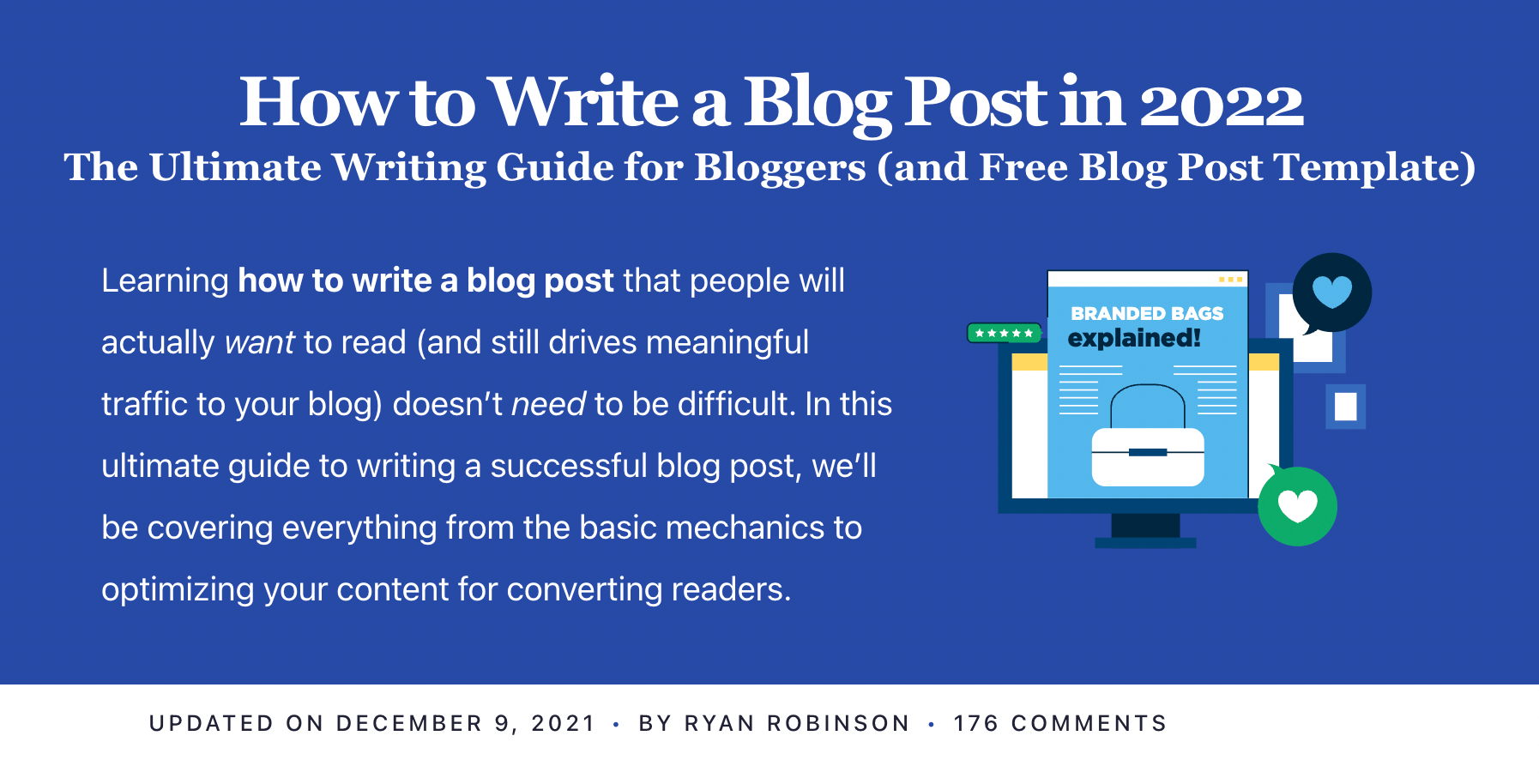
Let’s break down a few elements of how to write a blog post headline that’s captivating:
- Use numbers: I use the current year in the headline, making it (1) stand out visually in organic search results and (2) very quickly communicate to readers that this guide is up-to-date for them
- Include your target keyword phrase: Next, this headline includes the “how to write a blog post” root keyword phrase that’s at the core of exactly what potential readers are hoping to learn how to do here (which is good for both search engines and matching reader-intent) — be sure you’re using a great free keyword research tool
- Experiment with parentheses: After that, I’ve included a portion of the headline in (parentheses) which also tends to make it pop visually on a search engine results page
- Weave in a secondary keyword: Finally, I’ve added the (important) secondary keyword phrase of “Free Blog Post Template” into this headline, which is something no other current guides on this subject are offering readers (one of my competitive advantages with this guide) and another quick indicator of what readers can expect to get with this article
As I’ve said already though, the final version of this headline didn’t come until I’d fully written and edited this post.
And looking at it today, it’s already changed quite a bit from its original version—which is a reflection of listening to my audience, monitoring how many clicks it gets in organic search results and through paid advertising experiment.
While it’s tempting to wait for clarity before taking action, the truth is that clarity comes through action.
Just start writing and the headline ideas will flow as you progress.
As time goes on as you move from just learning how to write a blog post and into a more comfortable place as a writer, headlines will also become more natural for you to craft.
Leverage the curiosity gap. Write an irresistible headline that teases what’s in the piece without giving it away completely.
Curiosity is one of the most powerful human emotions, and wielding it effectively is all about balance. The trick is to provide just enough information to drive people to learn more, but not so much that they don’t feel compelled to investigate further.
Lastly, be sure to optimize for search and social. These two channels will be major sources of traffic for your content, so you need to be concerned with how your article headlines will be read and interpreted on these platforms.
- Is your headline exciting to tweet?
- Will it stand out in the noisy Facebook feed?
- Does it include a featured image that people will click on from Pinterest?
Using keywords to increase your chances of showing up in search results is always a good idea (more on that later), but you need to give yourself every opportunity you can to help engineer a headline that can accurately reflect your content and go viral on social.
Need Catchy Blog Title Ideas?
Try my free AI-Powered Blog Title Generator Tool to get dozens of SEO-friendly headline ideas to make your blog posts stand out today.
3. Hook Your Readers From the Start

You have one sentence, two at most, to entice readers and draw them into reading your blog post. Journalists call this the lede.
And just like meeting someone for the first time, first impressions with a blog post are critical and affect whether we choose to get to know someone better—or make our way to exit.
As you’re learning how to write a blog post, here are a few do’s and don’ts for crafting an interesting introduction:
Do:
- Use colorful language
- Open with a startling statistic
- Start with a quote
- Use drama or humor
- Leverage eye-catching formatting (like bold and italics)
Don’t:
- Use a cliche that’ll leave readers rolling their eyes
- Bury the lede (failing to tease the most interesting point in your article)
- State the obvious
The easiest strategy for crafting a compelling lede is to answer the who, what, where, when and why as soon as possible.
And this may sound counterintuitive when just learning how to write a blog post, but another useful strategy is to start with your conclusion first.
In the age of short attention spans, people have grown tired of wasting time on clickbait blog posts that go nowhere—which is why it pays dividends to invest in learning how to write faster, too.
So instead of trying to bait readers in to consuming a full article before reaching the answer they’re seeking—choose to learn how to write a blog post that gives them their answers right away, then use the rest of your content to show them why (and go into further depth for those who are particularly engaged).
The quicker you can establish relevance to your reader, give them a strong reason to believe they’ll find what they’re looking for in your blog post, the more likely they’ll be to dig into your piece and share it with others.
4. Answer Questions with Your Blog Posts
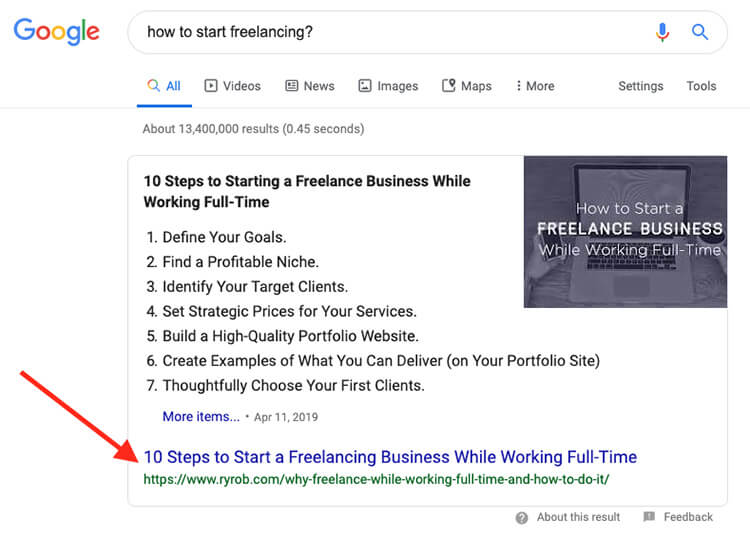
Google has gotten very good at figuring out not just what topics people are searching for, but what their intent is.
That’s why it’s different learning how to write a blog post today. It’s no longer just about delivering content that matches the words and phrases people are using—it’s all about delivering satisfying answers to reader questions, challenges and problems.
This has resulted in a growing number of zero click searches—results that highlight featured snippets, paid ads, knowledge panels, maps, and videos that answer search queries without sending users anywhere (like the screenshot above).
In the eyes of search engines, your blog has gone from a destination to a source of data.
Search for a restaurant and you’re likely to find a knowledge panel packed with ratings, hours of operation, location and top dishes with the restaurant’s actual URL buried somewhere near the bottom of the featured snippet.
While this is arguably better, easier and faster for searchers to find the answers they’re looking for, it’s bad for bloggers (like you) that want to control the experience for their readers.
However, it’s not all bad news. After all, you’re here to learn how to write a blog post for the way people are consuming content today.
The advent of featured snippets and knowledge boxes means that there are also a ton of new opportunities to get creative and break into these high-visibility featured snippets—thus outranking your competitors and giving yourself the best shot and bringing the most engaged readers to your blog.
They’re also a fantastic way to capture the growing voice search traffic boom that’s being ushered in by Alexa, Siri, Google Home and Cortana.
If you noticed near the top of this guide about how to write a blog post, I’ve included a very clear, hyperlinked menu that’s optimized to encourage featured snippet placements.
How to optimize your blog posts for featured snippet placements (with a hyperlinked menu).
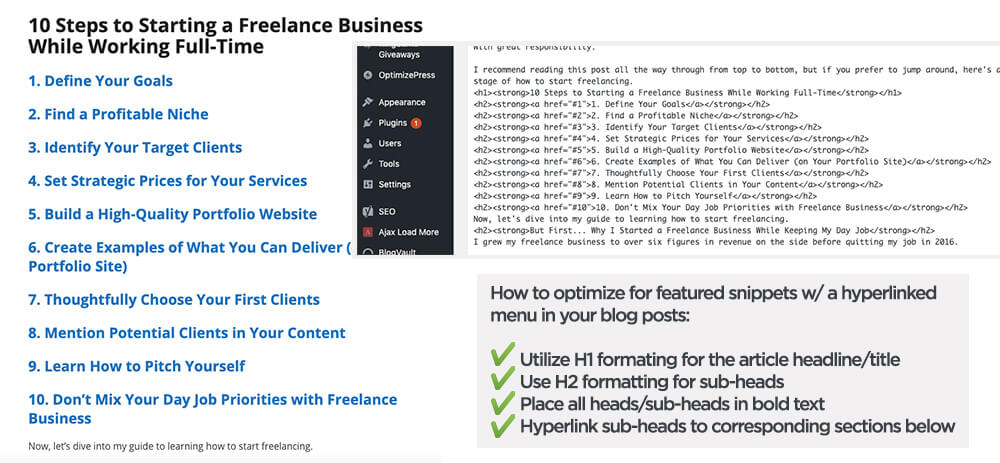
Remember that successfully landing a featured snippet for your blog post will require more than just implementing these formatting best practices—as Google takes into account a myriad of other factors like the number of high quality backlinks the article has, your page load speed, reputation of your websites (and more).
Still, you should always aim for landing a featured snippet as the benefits can be immense. Here’s how to get a featured snippet:
- Figure out exactly what people are asking (by observing suggested results on sites like Google and Quora)
- Make those questions the headers in your blog post (utilizing proper H1’s, H2’s and H3’s)
- Create a structured, hyperlinked menu near the top of your blog post using the same proper text formatting
- Hyperlink each menu item to it’s corresponding sub-header below (to make the post easily navigable)
- Answer the most common questions related to this search term succinctly (using question and answer format)
Aside from the obvious benefits of clearly answering the most pressing reader questions in your blog posts, doing so with smart formatting can reward you immensely.
Learning how to write a blog post that’s optimized for getting a featured snippet can help you get a ton of new traffic without needing to invest as much in other strategies like blogger outreach, buying crappy backlinks, guest blogging, paying to get social shares and other costly tactics that don’t pay off the same way.
Point being, it’s a worthwhile endeavor to sit down and craft a compelling blogging strategy for yourself and your core objectives.
Instead of spending money on cheap tactics to get more traffic, invest in learning how to write a blog post that’s 10x better than the competition.
One of the most common blogging mistakes I see (especially new bloggers make), is that they want quick results and they’re willing to try every “trick” and “hack” in the book. Side note—if you want to avoid more blogging mistakes like this, then do some extra studying with my picks for the best blogging books and blogging courses on the market today.
Many new bloggers will do this, rather than confront the cold, hard truth that in order to be worthy of getting the most readers to your blog—you’ll need to invest in writing blog posts that truly do a better job of solving reader challenges, than anything else on the Internet.
That’s why the best blogging advice is often so simple—create truly amazing content, spread the word and you’ll be rewarded for it.
5. Tell a Captivating Story

Humans have been telling stories for thousands of years, and for good reason.
Stories stir emotions, forge connections and are easy for us to remember. These three reasons alone are enough evidence that you should learn how to write a blog post in a format that tells a story for your readers to travel along with.
People are coming to your blog to be entertained or informed. Stories are a vehicle that make it easy to give them both.
On top of just the story component of your blog post, people connect with other people.
Sharing your own authentic stories will set you apart from the thousands of generic, content-farm blog posts that go out every day—and will help you connect with your audience on a much deeper level. Author Mark Manson is one of the best examples of learning how to write a blog post that tells fantastic stories and keeps his readers coming back for more.
To this date, my most engaged (successful) content on this blog have been the ones that go deep into my own stories, challenges and lessons learned along my journey as a blogger, freelancer and entrepreneur.
Luckily, storytelling is where I started when I learned how to write a blog post—and that focus on pulling from my own experience has created long-lasting bonds with my readers.
Here’s another fun idea to play around with…
Writing a great blog post can be like bringing a television show to life.
Think of each year (or quarter if you’re overflowing with blog post ideas) like a new season.
With this frame of reference in mind, that gives you latitude to think about your blog content in terms of answering questions like:
- What is the setting?
- Who are the characters?
- What are the situations?
- What’s the climax?
- How do you get people to tune in next week?
You don’t need to actually emulate the format of a television show, but having a common theme that weaves throughout your blog posts over time will help unify your content and move your readers along a path that will result in more loyalty to your brand.
Learn how to write a blog post that leverages storytelling and you’ll remain memorable to your readers.
If you’re unsure of where to find inspiration for stories to tell as you learn how to write a blog post that’s more personal and compelling, start with:
- Your own experiences (like this one)
- The experiences of your readers (like this one)
- Things you’ve read (like this one)
- Something you’ve created on your own (like this one)
- You can even write a story in collaboration with your readers (like this one)
And if you want a little more guidance, check out my list of 201+ blog post ideas that’ll steer you in the right direction with more clear prompts and inspiration.
4 characteristics of a blog post that tells a captivating story for your readers.
Regardless of how you land on the concept for a story though, every great story must have these four characteristics:
- It’s simple: An overly complex or convoluted story is difficult to keep track of and remember as a reader, let alone write. Keeping your stories simple will help your readers stay engaged and make it easier for you to convey your message.
- It’s memorable: What good is a story if people can’t remember it later? Great stories are meant to be reflected on, remembered and retold. Vivid language and exciting situations can help make your story stand out in your reader’s minds.
- There’s a compelling conflict: Conflict is what pushes the story forward. Without conflict, it’s hard to be memorable and even more difficult to stir the emotions of your readers.
- There are incredible characters: You may have all of the right elements but without lovable (or despicable) characters, your story is unlikely to have the impact you want it to. Give your readers someone to cheer for and see themselves in (or jeer at and want to object against).
One of the most common story formats we’re all conditioned to expect from a very young age, is the Hero’s Journey.
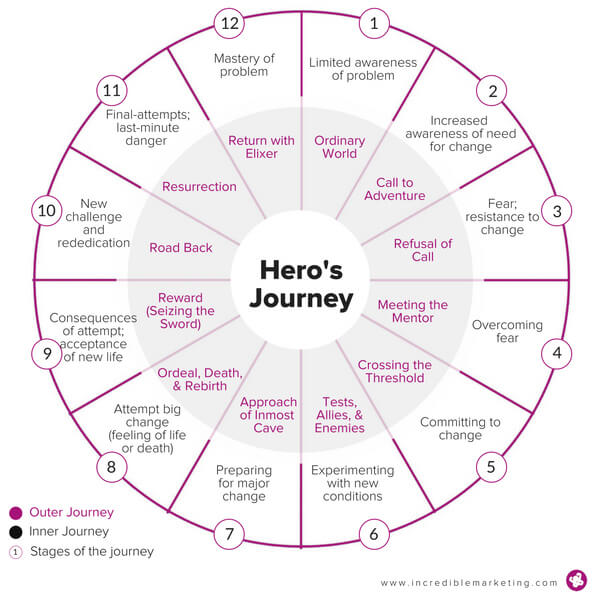
Its most simple format involves a hero who goes on an adventure, and in a decisive crisis wins a victory, then returns home transformed for better or for worse.
If you’ve read or watched The Lord of the Rings (or one of thousands of other books and movies today), then you’ve experienced the Hero’s Journey.
Use the Hero’s Journey as your template for how to write a blog post that tells stories and you’ll keep your readers coming back for more.
6. Make Your Blog Posts Easily Scannable
People rarely read word for word on the web.
Unless they’re extremely interested in the topic, most people will just quickly scan a particular blog post.
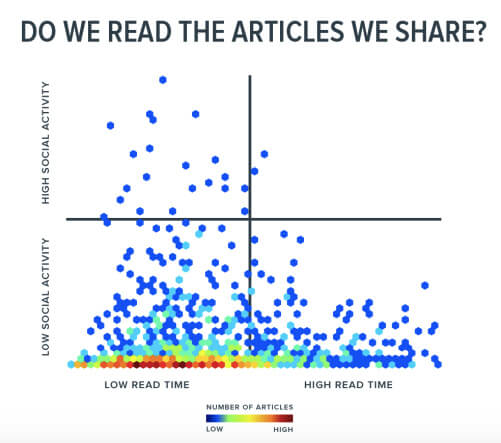
Reading behavior should be at the core of deciding how to write a blog post and what your blog layout should look like.
And as I mentioned earlier, the majority of us don’t even fully read the content we share online—whether through social media platforms, over email or word-of-mouth.
Eye-tracking studies have revealed most people read about 20% of the text on a web page. Skim reading is the new normal, so it makes sense that you should write your blog posts in a manner that’s conducive to this consumption behavior, right?
In one usability test by Nielsen research, scannable and objective copywriting resulted in 124% better usability compared to a more traditional blog post format with larger blocks of text.
Sticking with our theme of learning how to write a blog post that’s formatted for your readers to actually consume the content—here are a few tips for creating scannable content your audience will enjoy:
- Keep your paragraphs and sentences short (aim for a maximum of 3-4 vertical lines)
- Use simple words
- Include bulleted lists (like this 🙂)
- Use sub-headings to break up your posts into sections
- Play around with formatting like bold, italics, different text sizes and format to emphasize
- Add a few block quotes (or tweet quotes)
- Frequently utilize images, charts, and tables
While it may be discouraging to learn that people won’t read every word you write, that’s a truth that needs to be embraced.
Learning how to write a blog post that’s easily scannable will force you to focus on only the most critical information your reader needs to know. My list of the best blogging job websites is a great example of creating easily scannable long-form content.
Plus, being able to trim the fat will make you a stronger and more effective writer in the long run. And if you want to go into greater length, turn to learning how to write an eBook that can serve as a better destination for your much longer-form content.
7. Invest in Thoughtful Design

Humans are very visual creatures, and that’s important to keep in mind when it comes to learning how to write a blog post that’ll capture their visual attention long enough to provide meaningful value to your readers.
More than 50% of our brains are used to process visual information, compared to just 8% for our sense of touch and 3% for our sense of hearing.
In his book Blink, Malcolm Gladwell described the system our brains use to make split-second decisions outside of our conscious awareness, the Adaptive Unconscious. It’s constantly scanning our environment, evaluating stimuli and making judgments based on how things appear.
Because of the importance our brains place on the way things look, improving the visual appeal of your blog can increase perceived credibility, trust and value.
Conversely, when you write a blog post with unappealing designs, inconsistencies, or visual errors, it can quickly chip away the trust and authority you’d otherwise gain with readers.
Thoughtful design is crucial in keeping your blog readers visually engaged and entertained.
Here are five proven ways to improve your blog’s visual aesthetics, so that readers will want to stick around:
- Use lots of images: Photos, illustrations, graphs and charts break up the text and reinforce your ideas. When it comes to photos, life-like images work much better than cheesy stock photos. Snag a few pics from sites like Unsplash for a less “staged” look.
- Use proper formatting: In addition to helping with blog SEO best practices, the use of headers and other formatting tags provide crucial visual structure for your content and make it much easier to follow along with (or scan).
- Optimize your layout: Believe it or not, blog layout is extremely important. When viewing content on the web, people tend to scan in an F-shape pattern. Useful design can help prevent F-shape scanning, but it’s still a good idea to put critical page elements along the top and left side when you write a blog post.
- Increase your font size: While small text can look cool to some, it’s difficult to read, even for your younger readers. Larger font sizes can also increase reading speed and comprehension.
- Use margins and spacing: Margins, the blanks space between content and page edges, can help balance your design and make your content easier to consume. Include plenty of blank space around blocks of texts to make them more readable and less visually stressful for your readers.
Keep in mind that this should all be done on a budget—especially while you’re in the beginning stages of learning how to write a blog post (and build your readership).
Rather than hiring a graphic designer to create an entirely custom layout for your blog, I recommend using one of the best WordPress themes like Elementor or OptimizePress that comes with an array of well thought-out, mobile-friendly template designs already built-in to the product.
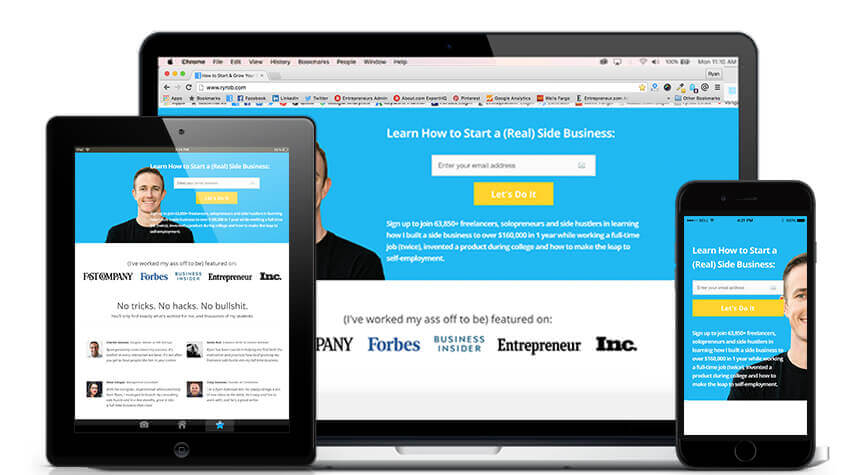
A heavily customized version of GeneratePress is the theme that now powers my blog, but as a non-technical blogger, it’s a little more challenging to learn than a visual theme like Elementor or OptimizePress.
8. Be Authentic in Your Writing

In today’s era of sleazy marketing gimmicks, fake news and paid influencers, people are more skeptical than ever.
Think about it… we’re inundated with all kinds of messaging and we’re getting better and better at quickly moving away the moment we smell something fishy.
Bringing real authenticity to the way you decide how to write a blog post can build a powerful connection with your readers.
A recent study found that only 20% of adults in the US trust brands, with this figure being even lower among Gen Z, at just 11.2%.
That makes it more important than ever to learn how to write a blog post that forges a genuine connection with your readers—built on a foundation of trust, rather than gimmicky tactics just to keep them on the page long enough to extract some advertising dollars.
Authenticity can help your blog stand out and will absolutely benefit your business in three major ways:
- It increases engagement: People are always craving real, authentic interactions. Craft your content with honesty and heart—your audience will be sure to reward you more of their time and attention.
- It elevates your brand: Your unique thoughts and perspectives can differentiate you from the competition. Over time, people will develop trust in you, which will increase your influence in their lives.
- It builds emotional connections: Honesty is refreshing. Be transparent, even if it puts you in a bad light, shows your weaknesses or failures and your audience will be drawn to your candor. It’ll increase trust significantly.
Not surprisingly, some brands are really nailing this today.
Patagonia is all about creating great products without causing unnecessary harm to the environment and they consistently put their money where their mouth is.
They donate millions to environmental causes, teach their customers how to repair their clothing so they have to buy less, and even discourage people from buying their products if they don’t really need them.
This unwavering commitment to their values has earned them a level of brand loyalty that is unrivaled in their industry.

Buffer, a social media management tool company, is also very well known for their authenticity & transparency in how they’ve gone about choosing to write on their blog.
They’ve famously written about their financial challenges and layoffs, published the salaries for all of their employees, and even shared their revenue figures. This radical approach to transparency has earned them a ton of free press and a large, passionate user base (including yours truly).
Being radically transparent in your blog posts can be a massive competitive advantage.
So how exactly can you be more authentic when you’re learning how to write a blog post?
- Talk like a human: Ditch the corporate lingo, buzzwords and start learning how to write a blog post the way you actually talk. Use short sentences and simple words to convey big ideas, but avoid using slang (or every possible blogging term in an attempt to sound credible), which can be distracting to readers.
- Identify your values: What do you really stand for? What is your purpose? What is your “why”? By living in harmony with your values and staying authentic to your message, you’ll be able to attract like-minded people and build your tribe.
- Write about issues you actually care about: Don’t try to chase trends or cash-in on fads. While you may see results in the short-term, people will be able to spot your insincerity from a mile away. Instead, write about issues that have the most relevance to you and your audience.
- Take a stand: Maintaining integrity means standing up for what’s right without compromise. You can’t make everyone happy, so come to terms with the fact some people won’t be fans when you write a blog post they disagree with. In the long run, taking a stand for what you really believe in will earn you the continued respect and loyalty of your audience that does feel similarly as you.
- Be transparent: Most people are quick to advertise their victories and success while keeping their mistakes and failures far away from public view. While it makes for a nice looking Instagram feed, it’s difficult to forge a real connection with someone who seems so perfect. Take the opposite approach and open yourself up to your audience, warts and all. Be quick to admit mistakes, chronicle your failures and share the real truth behind the topics in your industry (like how much it really costs to blog).
One of my most popular blog posts of all time here, is about my most painful business failure.
It first tells the story of how I invented a product in college, and the ensuing journey that led to eventually losing $6,537 on the business after a couple of years trying to grow the company. I then get into all of the lessons I learned along the way—reflecting on what I’d do differently both for myself and the benefit of readers.
And because I wrote a clever headline for it (“How to Create a Product Nobody Wants and Lose $6,537: The iStash Story“), that post went viral on HackerNews and brought in my first couple thousands readers to this blog. The rest is history.
If English isn’t your native language, I know it can be a challenge to start crafting stories (and headlines) like this overnight.
Take some time to brush up on your English writing abilities with language learning mobile apps like Babbel, Duolingo, Rosetta Stone and others.
The more you practice your reading & writing, the greater your ability—to learn how to write a blog post that connects with readers—will become.
9. Make Your Blog Posts Portable (and Mobile-Friendly)

Everybody knows that content has to be viewable across all devices today—that battle was won long ago.
But mobile-friendly design alone is not enough anymore. You need to learn how to write a blog post that can be digested in more ways than every before.
People are constantly on the move—and the way they consume information is always changing. That means re-learning how to write a blog post for the ways in which readers want to digest your content.
Your blog posts need to be portable to fit different lifestyles, not just different devices.
Someone may start reading your blog post on a laptop at work, then hop on a bus to head home—making it more preferable to listen to a podcast version or watch a video of you talking through the concepts covered in the written post.
To adapt to these new behaviors, it’s crucial to break your pieces of content up into different mediums so that your audience can quickly consume content in a format that makes sense for them at the time, plus allows them to easily pick back up where they left off last time.
Taking this additional step to make your content more accessible should be seen as an investment.
It’ll not only make your blog posts more accessible to a wider audience, but will also show that you recognize we all learn differently and that you’re going above and beyond to deliver standout content—that does a more diverse job of attempting to solve reader challenges in different formats.
This is the way of the future when it comes to learning how to write a blog post readers will benefit from.
To get started, try turning your existing long-form blog posts into:
- Videos
- Podcasts (just be sure to choose good podcast hosting if you start a podcast)
- GIFs
- Social posts
- Infographics
- Slide decks
Converting your content into different formats can even help people with difficulties (or disabilities) that prevent them from reading, to benefit from your blog.
Accessibility with your blog posts is no longer optional.
Doing what you can to make your work easier for everyone to enjoy is not only the right thing to do, it’s good for business.
Sure, you’ll need to have the right website template, choose from amongst the best website builders and actually make a website that’s responsive in order to present a readable blog—but accessibility also extends into having multiple consumption formats for your readers that may not be able to physically read your content.
Learning how to write a blog post that can easily be converted into other content formats is key as we move forward.
10. Prioritize Quality Over Quantity

In the early days of blogging, consistency was key.
Merely writing blog posts with some degree of regularity was enough to build an audience and grow your traffic.
While it’s still important to have a regular publishing cadence, the market for blogging in virtually every category has grown extremely competitive & saturated. Today, quality beats quantity every day of the week.
In 2025, the success of your blog is far more dependent upon how much you can stand out from the sea of competitors also writing about the same topics as you. As you’re determining how to best compete with higher quality blog content, seek to answer these questions:
- How can you use your strengths, experience and interests to differentiate your content?
- Can you adapt to regularly write a blog post that’s twice as long as your competitors?
- Do you have a particular skill (like one of these blogging skills) that can be leveraged to make your content more unique?
Find your competitive advantage and lean into it with the goal of better solving your readers challenges.
If you can successfully do that, then you’ll be well on your way to taking over as a real force within your niche.
One of my greatest competitive advantages is that I can go into far greater depth than most in my industry when I sit down to write a blog post.
How long should a blog post really be?
While there’s no exact answer for everyone, longer posts perform better in search results, which means longer posts are what readers (often) want. The ideal blog post length for most article topics is 1,500 – 2,500 words. How many words is too few though? I’d recommend you try to avoid going under 1,000 words for any blog post that you want to rank well in organic search.
Now, if you take a look at the articles here on my blog, you’ll see that most of them (including this guide) are well over 5,000 words in length. That level of depth is done with a purpose—and because I’m not afraid to shy away from answering the questions, concerns and smaller topics that come up during the process of writing blog posts on such big topics (like how to write a blog post).
On the other hand, articles we write on my girlfriends blog, Vegan Anj, are often on the shorter side & address questions about life as a vegan that can be addressed more quickly. I’ll be soon taking a similar approach with my new side blog, VeganTable too.
Learning how to write a blog post that truly stands out will take some time.
Investing more time into each blog post you publish will naturally translate into releasing new content with less frequency, but ideally in much greater depth.
When I go to write a blog post here on my own site, it’ll usually take at least couple of weeks from start to finish. That’s because each and every article I publish goes through a rigorous process of research, blog outlining, writing, editing and then formatting with images, tweet quotes, custom graphics and such—all before it’s finally published for the world to see.
But it’s that level of care, depth and detail that’s helped me to rise above the competition in my niche.
And this is working well for more than just me, too.
Brian Dean, the SEO master behind Backlinko, is one of the world’s foremost experts on creating high-quality content that ranks well in search engines.
He only posts a few times a year, but each piece he writes tends to be just about the single best article on the topic.
In fact, one of his best SEO tactics is the skyscraper technique (which I’ve written about too). This method boils down to finding an existing popular post and making it better through improved content, design and exploring more diverse content mediums.
Posting regularly is still necessary to grow and maintain your audience, but it’s much better to slow down your cadence and put out original, high-quality content, than it is to publish subpar content on a daily basis.
11. Show Them the Numbers

As we talked about earlier, most people are pretty jaded about gimmicky content these days.
Who can blame them? Most of us have been duped, conned, and defrauded at one point or another online.
To make your content stand out, show data to back up your claims, increase your credibility and illustrate your points wherever possible. This is a core principle of how to write a blog post that’s firmly convincing.
That’s a major reason why I originally decided to share monthly income reports with my readers—to show them that I’m not just writing about what to do in order to start a profitable blog, but I’m actually putting my own advice into practice here on my blog (with transparent results). I even go into the nitty-gritty details around expenses and share best practices on financial topics like how to manage taxes for bloggers, which provides an immense amount of value to those looking for a lot of advice.
Original data and research are huge differentiators that can help your blog rank higher in search results, build backlinks, and increase your authority, influence and credibility.
The first step to learning how to write a blog post that leans on credible data is gathering the actual data itself.
Some of the best sources for tracking down original data to include in your blog posts are:
- Experiments: The first and easiest way to start collecting original data is to conduct an experiment (like this one I did). Form a hypothesis, devise an experiment, summarize your findings and compare the options (like I did in my roundup of the best web hosting plans for bloggers). Your experiments don’t have to be elaborate, just share what you’re learning and be transparent with the results.
- Observations: If you can find something you can measure or track, you’ve got a data source just waiting to be analyzed. Decide on a length of time you’ll be monitoring the situation and put the numbers in a spreadsheet for easy analysis.
- Surveys and polls: As we covered in the first key, there are a variety of free and inexpensive blogging tools we can use to run surveys and polls of our audience. Even if your audience is on the smaller side, a well thought-out survey can yield some impressive insights—especially if you’re not afraid of doing a little blogger outreach to collect data points from others in your blog niche.
- Data scraping: One of the most creative ways to get interesting and original data is called scraping. Build an algorithm or outsource the development of a tool to collect information from websites that hasn’t been explored yet. You can even just publish a roundup like my blogging statistics article that breaks down the data I’ve sourced from dozens of different websites—housing key information in just one location for readers.
- Industry reference pieces: Several of my glossary-style listicles that break down blogging terms and business jargon that you’ll need to familiarize yourself when either starting to blog—or entering the workforce—are often mentioned on high quality publications and industry blogs as helpful resources.
- Comparisons and reviews: Another great format for helping your readers make a difficult decision that involves a financial component, is by providing them with an unbiased review of the most relevant products and services within your industry. A few examples of this in practice here on my blog, would be through my reviews of the best hosting plans and with even more specific content pieces like covering the top cheap hosting plans, monthly billed hosting options and a compilation of honest Bluehost reviews from across the web.
Another clever way to use data in your blog posts is to put a new spin on existing research done by others.
This is a smarter place to start than investing a ton of time (and financial resources) into your own original studies as you’re still learning how to write a blog post that can effectively communicate data.
Here are a two smart ways to leverage existing studies out on the Internet, into unique content for your own blog:
- Interpret data and offer an original perspective: Come up with a unique theory or insight based on studies, guides and reports. Draw connections between two different data sources or identify patterns that have gone unnoticed. While the data may not be original, the thinking will be.
- Make the data easier to consume and share: Turn hard-to-read studies into eye-catching charts, infographics and embeddable images. Compile a bullet listed of the most impressive facts or data points around a topic. Summarize insights into bite-sized, tweet-able sentences.
Now, for those of you more visual learners, I’ve worked with a talented designer to bring this infographic about how to write a blog post to life…
How to Write a Blog Post in 2025: Infographic
Check it out and let me know what you think in the comments!

Want to share this infographic on your blog too?
Shoot me an email to ryan@ryrob.com and I’ll hook you up with hi-res files 🙂
Final Thoughts: How to Write a Blog Post That’ll Captivate Your Readers
While the competition for clicks increases each year and organic traffic from Google continues to shrink, there are still incredible new opportunities to expand your reach and build an audience this year.
But that increased competition doesn’t mean you need to throw in the towel on your blogging ambitions.
The bar for what constitutes transformational content continues to be raised—and this is your call to rise to the occasion as a blogger.
In order to write a blog post that can stand the test of time (and rank high in organic search results), it’ll require a growing time investment on your end. Now, it’s up to you to determine whether or not that work is actually worth it. If you ask me… it definitely is.
Following these steps, you’ll learn how to write a blog post that’s poised to stand taller than the rest.
And for a deeper dive into how to attract more readers to your content, read my Ultimate Guide on How to Drive Traffic to Your Blog.
👋 Oh and remember! If you want access to my free blog post template (in the form of a copy & paste Google Doc), then you can grab it right here—including my SEO blog post writing checklist and a fully completed example to guide you along the way—get my free blog post template.
Want to Learn How to Write a Blog Post?
Grab my free blog post template for creating compelling content.
"*" indicates required fields

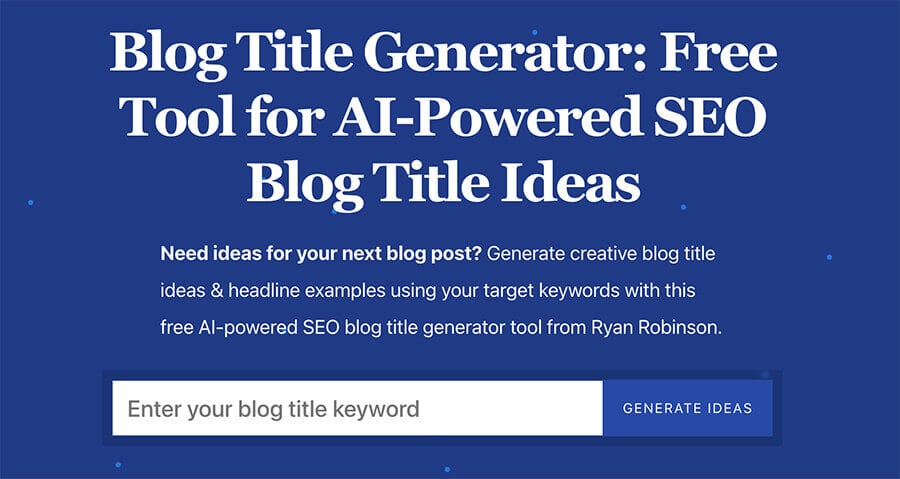

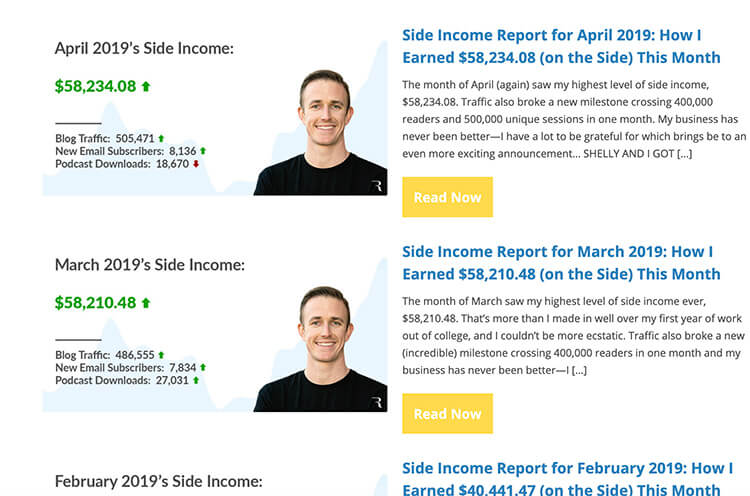
212 replies to “How to Write a Blog Post in 2025 (Free Blog Post Template): The Ultimate Writing Guide for Bloggers”
Wow, this is such an incredible guide to mastering the art of blog writing! As someone who’s been navigating the blogging world for a while now, I truly appreciate how comprehensive and actionable your advice is. The emphasis on understanding your audience first really resonated with me—so many bloggers skip this step and end up creating content that doesn’t connect.
I also loved the section on crafting captivating headlines. It’s such a critical skill, yet so many of us struggle with it. Your tip about starting with a working title and refining it later is gold—it takes the pressure off during the initial stages of writing.
One thing I’m curious about: How do you balance SEO best practices with maintaining authenticity in your tone? For instance, when targeting specific keywords, do you find it challenging to keep your voice natural and engaging?
Thanks again for sharing such valuable insights—I’ll definitely be referring back to this guide as I work on my next blog post!
Great post, Ryan! 🙌 Your step-by-step breakdown—especially the sections on audience insight and crafting compelling headlines—really hits home. As someone running a digital marketing agency, I’ve seen firsthand how defining your readers and structuring content for readability isn’t just best practice—it’s essential for campaign success. Really appreciate the free template too. It’s going into our toolkit 🛠️ Thanks for consistently delivering high-value, actionable content!
Thanks again for sharing such valuable insights—I’ll definitely be referring back to this guide as I work on my next blog post!
This guide is super helpful for new bloggers! I liked the tips on understanding your audience and writing catchy headlines. The free blog post template is a great bonus, thank you!